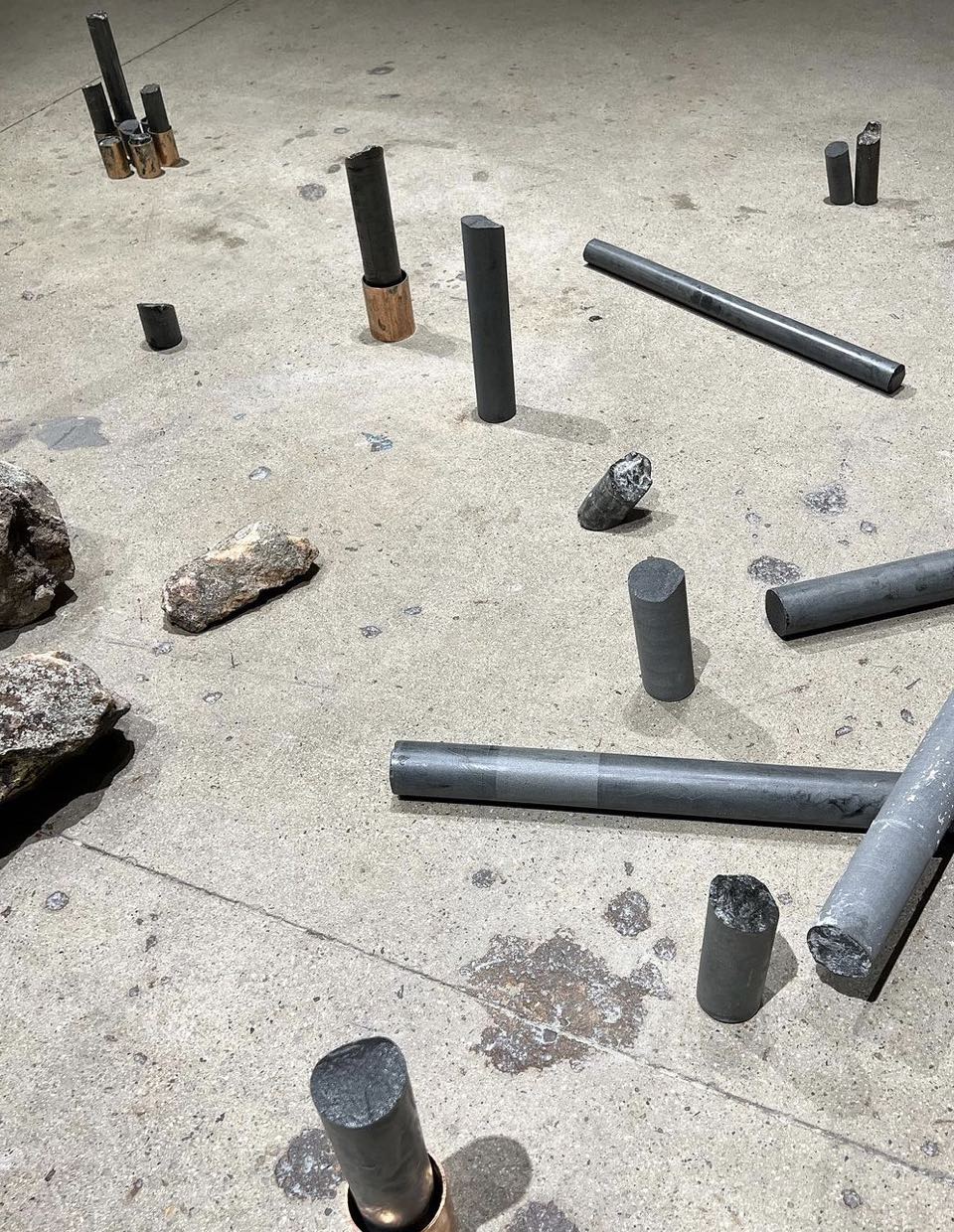Congratulations to APP Chair and Professor Pato Hebert for his work in “HOLDING WHAT CAN’T BE HELD” at Ming Studios in Boise!
Holding What Can't Be Held invites artists to contemplate the legacy of Idaho's involvement in the nuclear industry and the radioactive waste in our own backyard. After a visit to the Idaho National Laboratory and after learning about the radioactive clean-up program, participating artists are showing work that came about as a byproduct of two years of holding this material in contemplation.
Regarding his work for the 2023 exhibition of HOLDING WHAT CAN'T BE HELD, Pato writes:
“During a tour of the Idaho National Laboratory (INL), I was struck by the strange color of the spent fuel pool. It was an oddly alluring turquoise-green. It reminded me of the patina that can accrete on oxidized copper. The INL sits on top of ancient flows of basalt. Basalt is a volcanic rock, most often dark in color. Under this basalt lies the Eastern Snake River Plain Aquifer. According to a 2017 report by the United States Geological Survey, wastewater from the nuclear activity at the INL has contributed contaminants into this aquifer.
Basalt is old, born of the earth’s magma cooling as it rises. Someday, nuclear waste will also be old, long outliving our fleeting human existence. The storage of our waste, and the prevention of its further contamination of earth and water, are urgent problems of nuclear energy. An emergent concept for nuclear waste storage called KBS-3 is currently being developed in Sweden. The technology seeks to utilize the protective capacities of copper, surrounded by bentonite (an absorbent clay), buried in bedrock. There are debates whether these layers can avoid corrosion and serve in a protective capacity for the life and half-lives of the nuclear waste.
Basalt, bentonite and copper are the materials and inspiration for my piece, which tries to think on the time scales of both volcanic bedrock and nuclear waste. What will happen as our overheated and relatively young nuclear fervor inevitably cools but the radioactivity of our waste has not?”
To learn more about the exhibition, please visit the link below:
